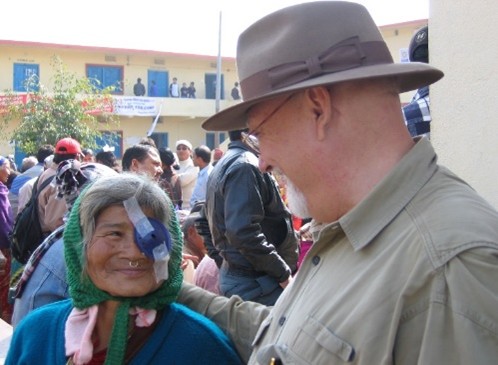Ray Avery is an accomplished New Zealander: a scientist, author, entrepreneur, and philanthropist. He won New Zealander of the Year in 2010 for his development of affordable intraocular lenses and philanthropy.
Avery was born in London in 1947. Through his early years he lived in foster homes and orphanages after his father left, and it was not safe to remain with his mother. As a teenager, he slept underneath a London bridge, educating himself by going to the library. A man named John Wise got him a job at Wye College as a junior laboratory assistant.
Avery moved to New Zealand in 1973 and started working at the medical school. Avery was a founding member of the School of Medicine Department of Clinical Pharmacology, working as a Chief Technical Officer, to organize laboratories, important skills for his later projects.
In 1992 Avery met Fred Hollows. The Fred Hollows Foundation is an organisation dedicated to preventing blindness and vision impairment, especially in developing countries. An important part of their work is cataract surgery. Cataracts are the natural clouding of the eye lens as people age. It is a common cause of low vision in people over 65 years. In New Zealand, about one in four people over the age of 75 years will need cataract surgery. During cataract surgery, the doctors make the eye numb and then make a small slit in the side of the eye. The lens is then vacuumed or scraped out and replaced with an intraocular artificial lens. The lenses are usually extremely expensive. For the Fred Hollows Foundation, the cost restricted the amount of surgery that could be afforded in countries with developing health services. Hollows wanted someone to go to Eritrea in Africa, to set up a lab to manufacture intraocular lenses. It was a perfect assignment for Avery. He designed two modern intraocular lens laboratories located in Eritrea and Nepal. Avery made equipment which could make the desperately needed artificial lenses very cheaply. Both labs now contribute to 16 percent of the worldwide intraocular lenses.
Other inventions of Avery’s include: the Acuset IV flow controller and LifePod, as well as cheap protein formula. All these inventions aim to improve healthcare in developing countries. The IV flow controller was invented with the aim to be more accurate than the roller clamp. The LifePod is an incubator for newborn babies that runs more sustainably and efficiently than the usual incubators that malfunction and are difficult to repair in developing countries.
In 2025, Our Health Journeys continued our partnership with Saint Kentigern College in Auckland to challenge a number of students to conduct research into an aspect of the medical history of Aotearoa New Zealand. The students, ranging from Years 8-13, produced their research in written, oral, or video format and the top projects were chosen for publication to Our Health Journeys.





